May 26, 2015
Mack and Velkena Glacier Retreat Novaya Zemlya 1988-2013
Posted by Mauri Pelto
Mack and Velkena Glacier are tidewater glaciers on the northwest coast of Novaya Zemlya that drain into Legzdina Gulf. The glaciers terminate in the Barents Sea and have been retreating like all tidewater glaciers in northern Novaya Zemlya LEGOS, 2006). The map shown below from this project indicate the glaciers joined in 1952 and 1976 and separated by less than 1 km in 1988. Carr et al (2014) identified an average retreat rate of 52 meters/year for tidewater glaciers on Novaya Zemlya from 1992 to 2010 and 5 meters/year for land terminating glaciers. This ongoing retreat is illustrated by Krivosheina, Chernysheva, Roze and Sredniy; and Taisija Glacier also in northern Novaya Zemlya. Here we examine Landsat imagery from 1988 to 2013 to identify changes in Mack and Velkena Glacier.
Map of Velkena and Mack Glacier area from Sharov et al (2006) at LEGOS. The red dashed line is 1952, green dashed is 1976, yellow dashed is 1988 and solid purple is 2001.
The arrows and letter in each image are at fixed locations: the yellow arrow indicates the peninsula where Velkena and Mack Glacier separated. The red arrow indicates the 1998 eastern terminus of Mack Glacier and the purple arrow indicates the 1988 position of the western terminus of Velkena Glacier. The green C and pink C respectively indicate areas of intense crevassing in 2013. In 1988 the glaciers are separated by just 500 m adjacent to yellow arrow, the crevassing is limited at both C’s. In 2000 Velkena and Mack Glacier are now separated by 1.4 km, retreat of Mack from the red arrow is 500 m and retreat of Velkena Glacier from the purple arrow is 600 m. In 2006 Mack Glacier has retreated 1000 meters from the red arrow, and Velkena Glacier has retreated 1200 meters from the purple arrow. Extensive crevassing is not yet evident at C.
In 2011 at both locations crevassing is readily apparent in the satellite imagery. Retreat has continued for both glaciers 1250 m for Mack Glacier from red arrow and 1600 m for Velkena Glacier from purple arrow. In 2013 the extensive crevasses zone (C) for both glaciers is within 500 m of the icefront. The increase in crevassing is indicative of glacier acceleration, this is likely due to a steeper slope of the glacier near the current terminus. This also suggests retreat will remain rapid in the near future. Retreat of Mack Glacier from 1988-2013 has been 1.8 km on the east side, red arrow, and 2 km on the west side. On Velkena Glacier retreat has been 2.8 km on the west side, purple arrow, and 1 km on the east side. Both glaciers have been receding at a rate greater than the 50 meters/year noted as average by Carr et al. (2014). Anomalies for sea surface temperature along this section of sea ice free Novaya Zemlya are well above average in May 2015, which should lead to continued calving retreat.
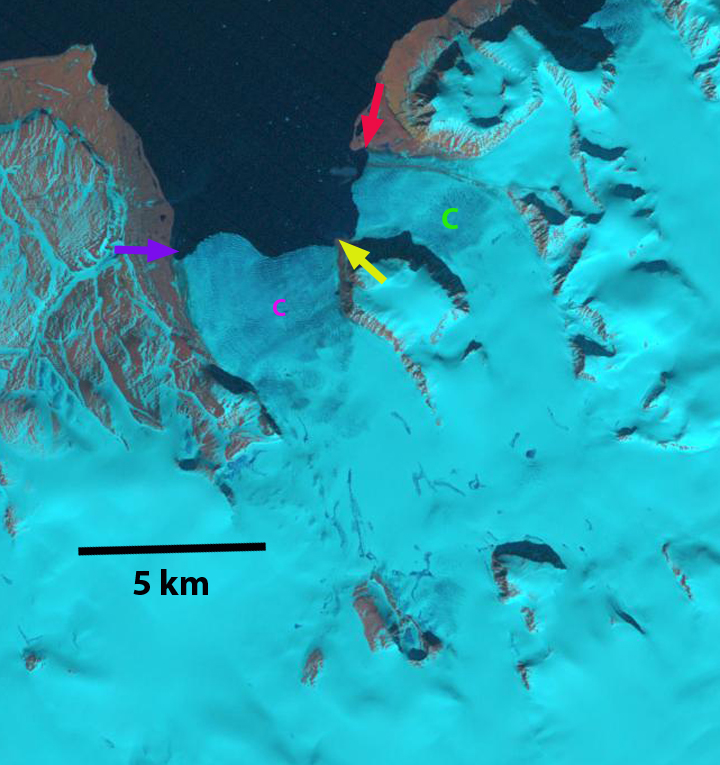
1988 Landsat Image
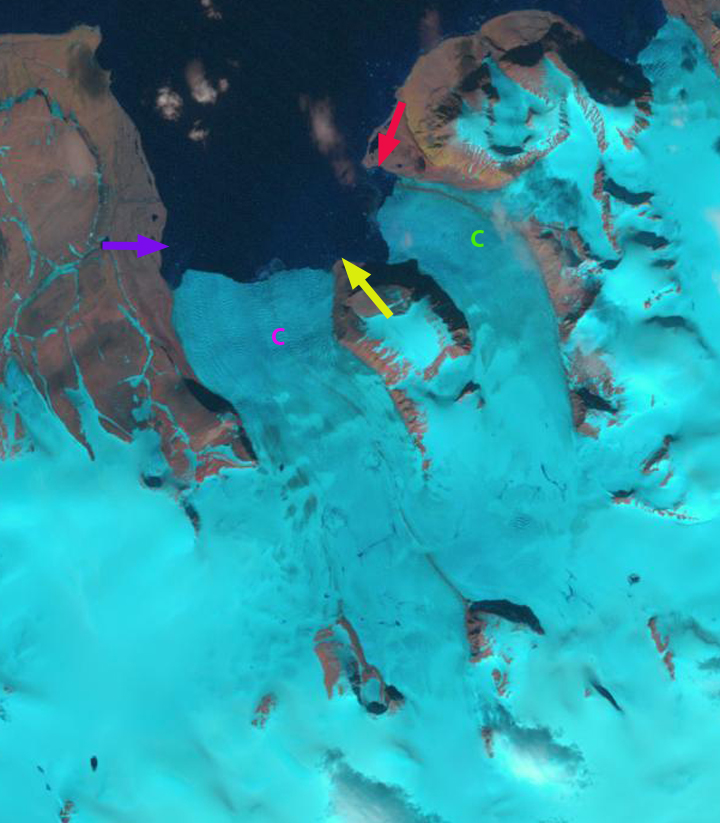
2000 Landsat Image
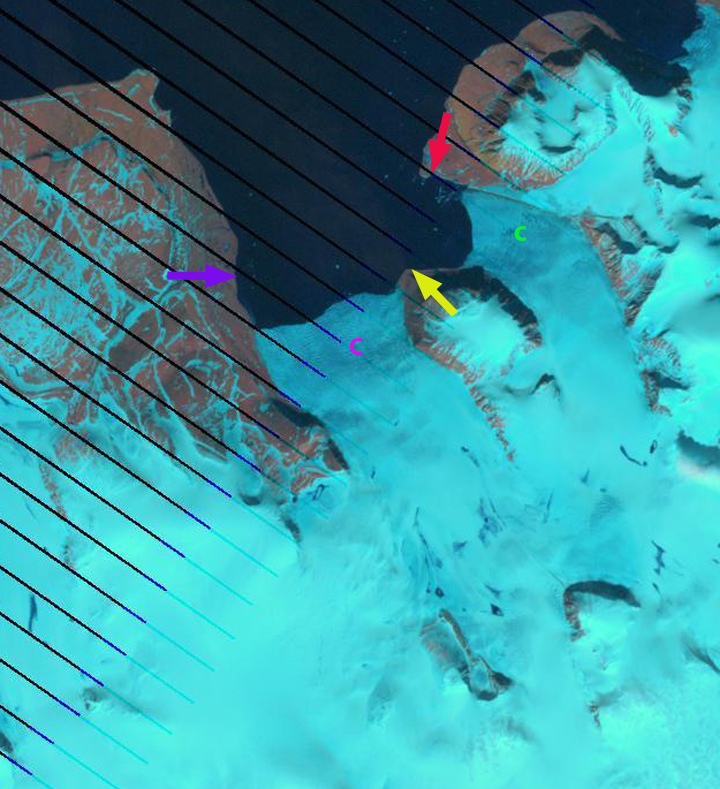
2006 Landsat Image

2011 Landsat Image
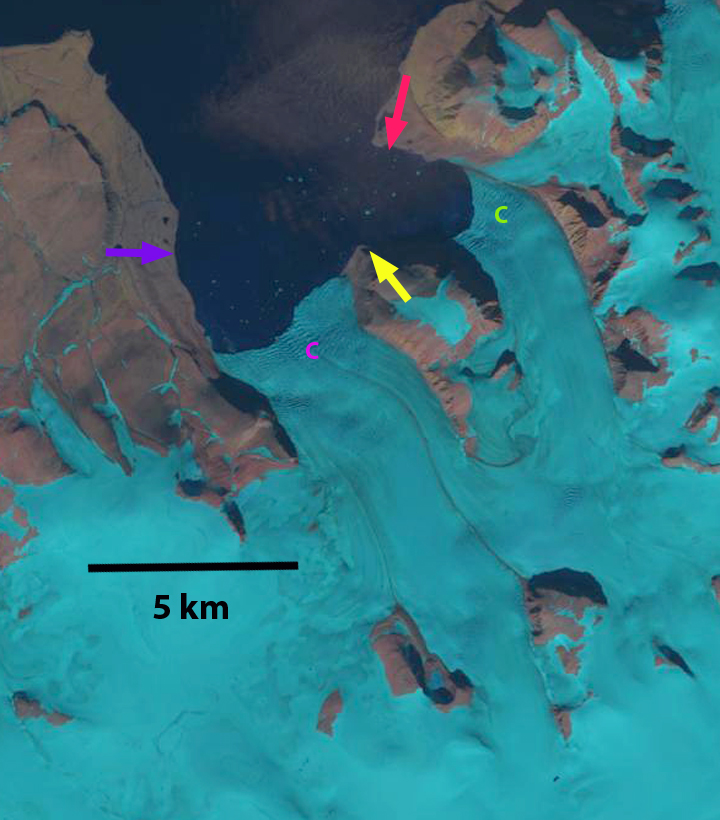
2013 Landsat Image


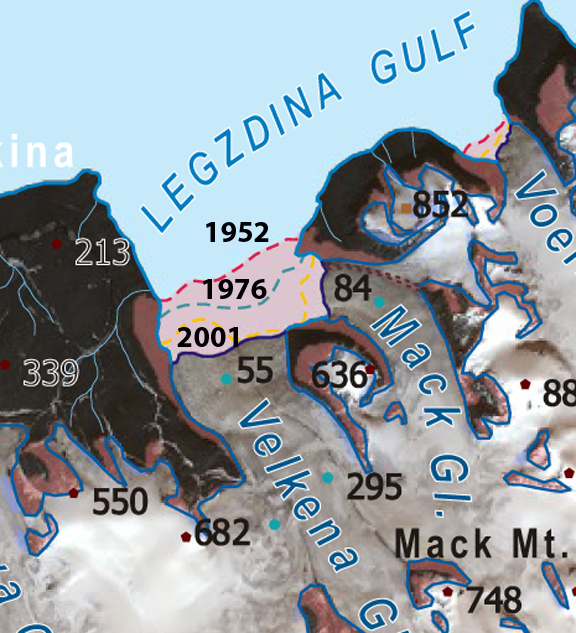
 Dean of Academic Affairs at Nichols College and Professor of Environmental Science at Nichols College in Massachusetts since 1989. Glaciologist directing the North Cascade Glacier Climate Project since 1984. This project monitors the mass balance and behavior of more glaciers than any other in North America.
Dean of Academic Affairs at Nichols College and Professor of Environmental Science at Nichols College in Massachusetts since 1989. Glaciologist directing the North Cascade Glacier Climate Project since 1984. This project monitors the mass balance and behavior of more glaciers than any other in North America.